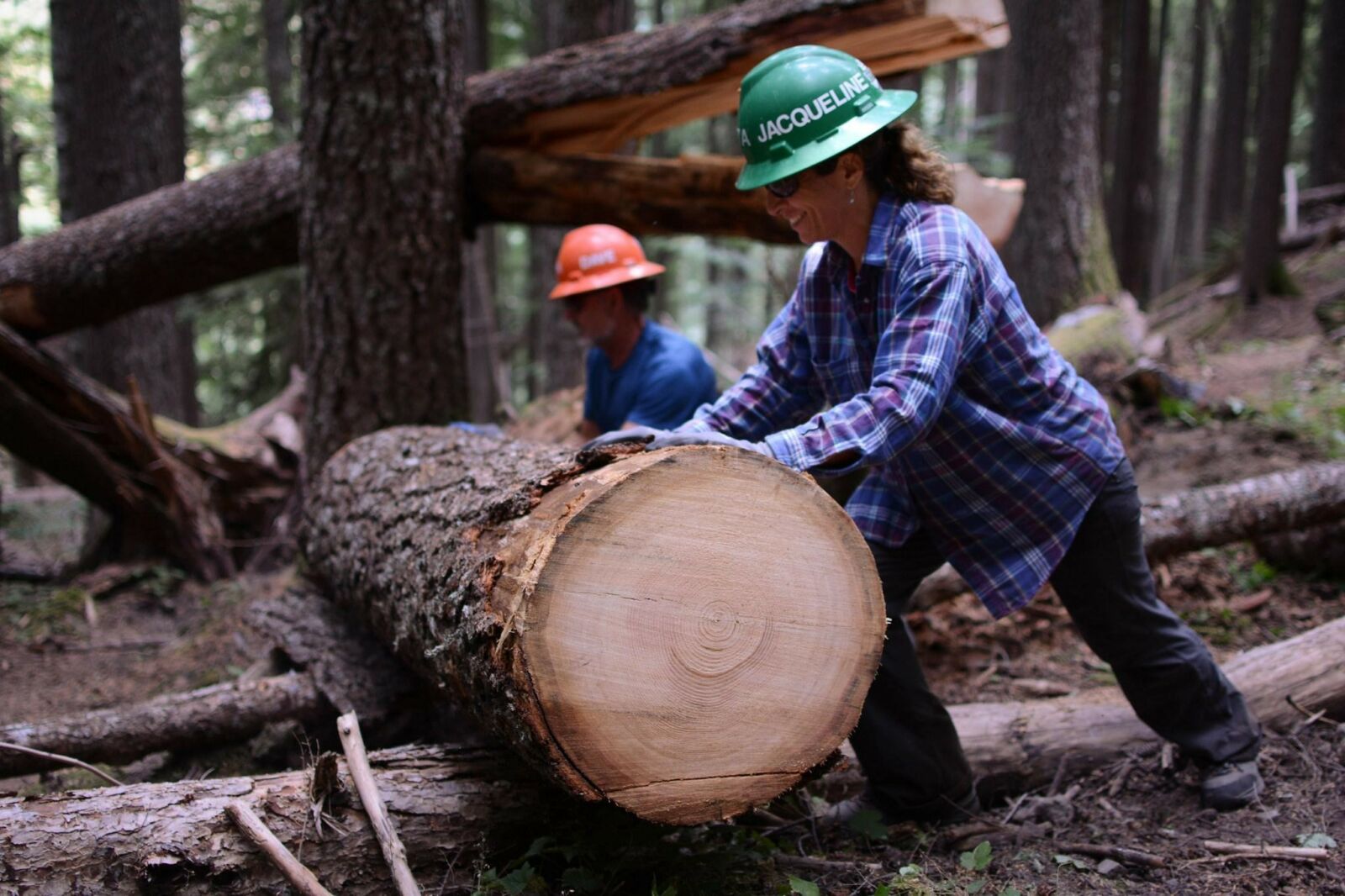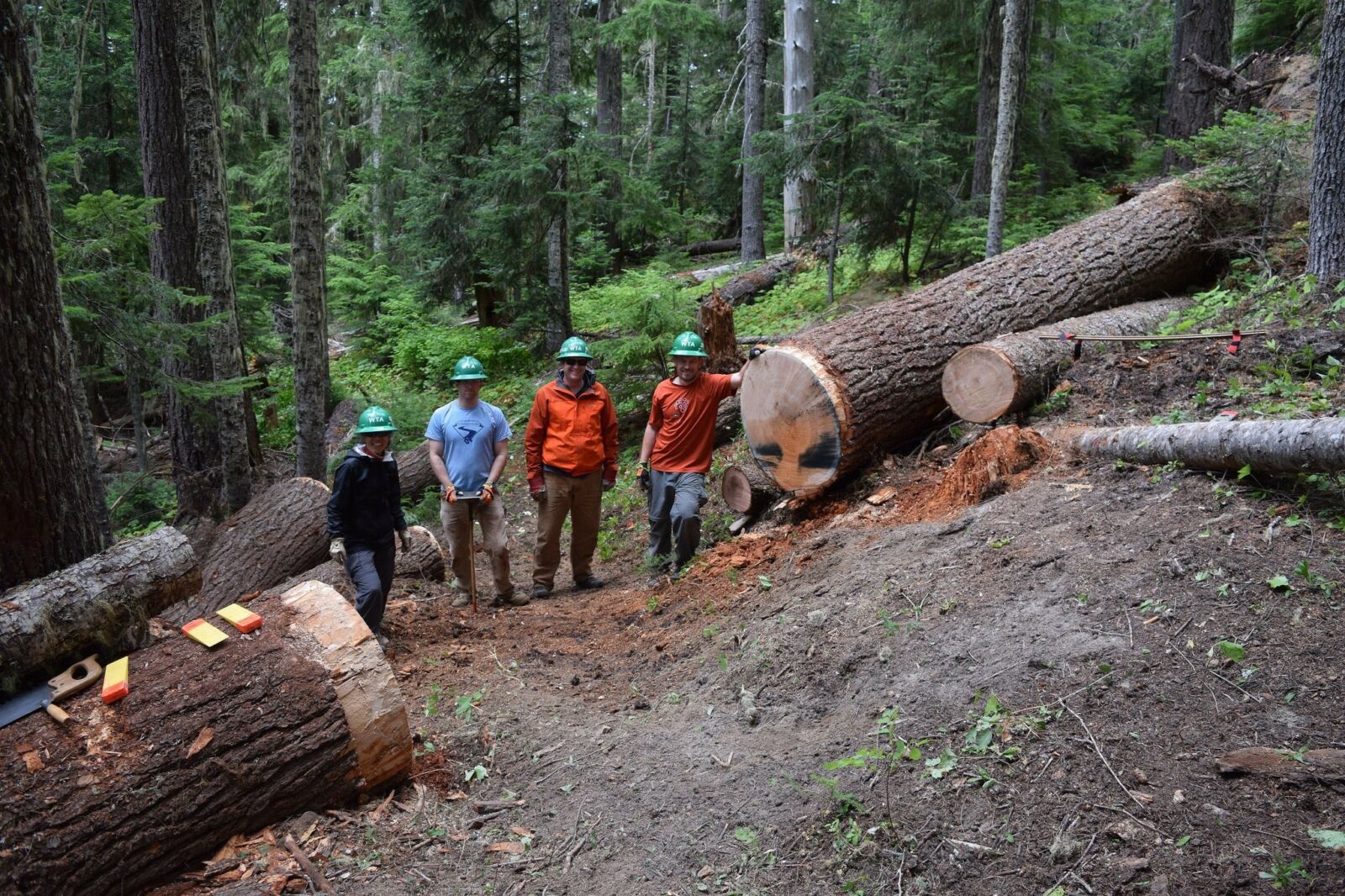In 2017, a $20,000 grant from the National Forest Foundation supported Washington Trails Association’s (WTA) work in restoring 24 trails throughout the Gifford Pinchot National Forest. A highlight of the project is a focus on “lost” trails where a backlog of deferred maintenance has all but closed them off to the public.
Nestled between prominent Mount Rainier and the snow-capped Mount Adams, the Goat Rocks Wilderness Area is known for its stunning scenery, park-like alpine meadows and aqua blue lakes.

Photo by Britt Lê
WTA volunteers removed more than 100 blowdowns from the Packwood Saddle trail this September 2017.
Unfortunately, years of storm damage, fallen trees and road washouts have dwindled the area's accessibility to a handful of trailheads. Concurrently those areas that remain accessible are becoming overcrowded threatening the very beauty and solitude the Wilderness Act intended to preserve.
WTA’s Community Partnerships and Leadership Development Coordinator, Britt Lê, joined a crew at Packwood Saddle in early September 2017 for her first backcountry, weeklong trip with WTA.
“Over the course of four days, our crew of 10 removed more than 110 logs that were encroaching on the trail," she recalled. "Before I learned how to use a crosscut saw, I would walk by gargantuan logs that had been sawed off trail without giving them a second thought. Now, every time I see evidence of crosscut work, I always take a moment to appreciate the efforts made by an anonymous crew to help maintain access to our most beautiful places.”

Photo by WTA Staff.
A crew of eight WTA volunteers tackled one of the roughest sections in the Goat Rocks Wilderness: the nearly impassible the Angry Mountain Trail
The Angry Mountain trail had become so difficult to follow due to lack of maintenance the route has been removed from some maps. It has a reputation among the relative few who have hiked it as one of the roughest, toughest routes in the Goat Rocks.
In 2017, a crew of eight volunteers were able to clear 1.5 miles of fallen trees, rework the tread on overs 300 yards of trail and brush over 200 yards of trail, continuing the work WTA began the previous year on the trail.
But they weren’t alone in the effort. The Lewis River Chapter of Back Country Horsemen, led by crew leader Tom Faubian, worked in conjunction with the WTA crew.
“I was blown away by the work you folks did over the last #90 trip," Tom said of the WTA crew, "there were logs cut out that would have been challenging to the finest windfall bucker (a sawyer focusing on fallen trees) from the old days. You were able to not only make the cuts safely and get the large logs overboard ... It is an incredible piece of work.”
Thanks to volunteers, strong partnerships and funding from the National Forest Foundation “lost” trails like Angry Mountain are being restored for another generation of hikers to find and enjoy.
Want to help save trails like these? Join WTA for a week outside this summer! Our 3-8 day Backcountry Response Teams and weeklong Volunteer Vacations connect backpackers with much needed trail maintenance projects throughout Washington. Summer trip registration opens in February. Trips fill up fast, so be sure to register early.

